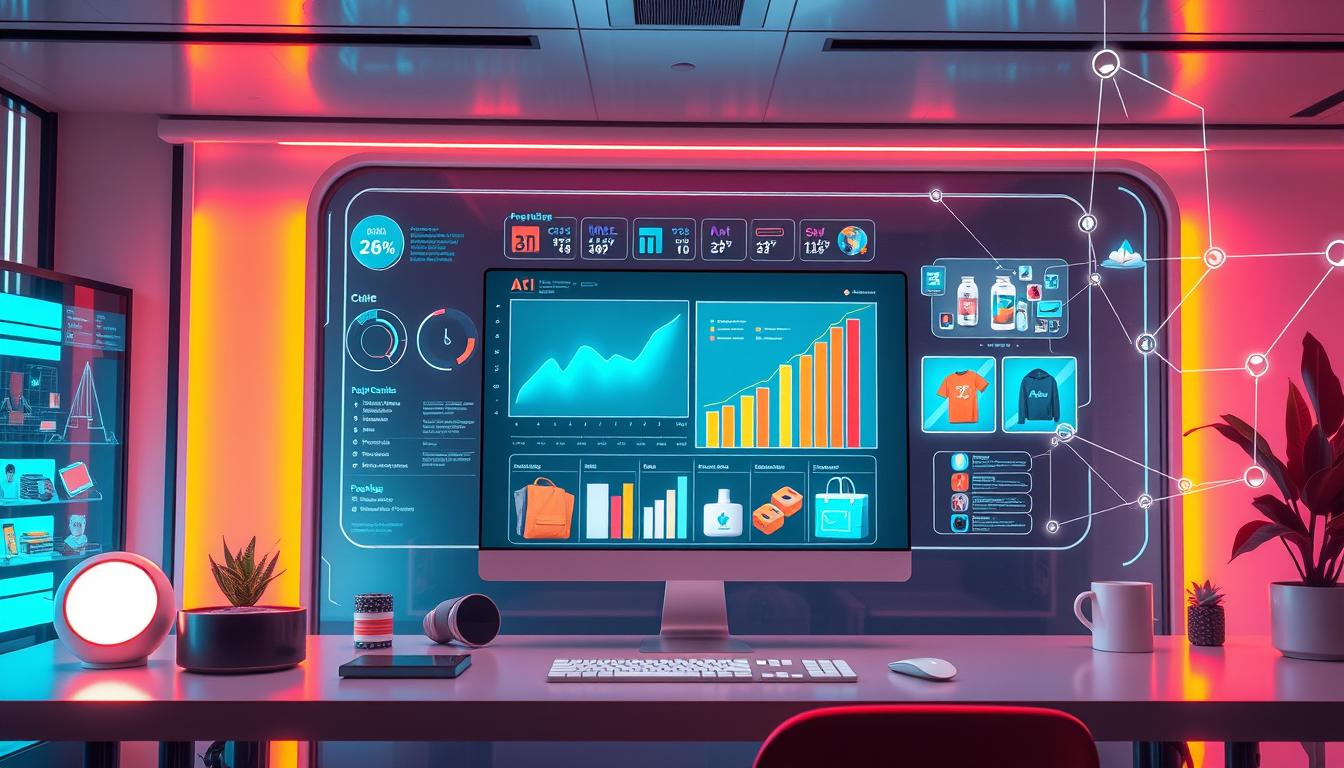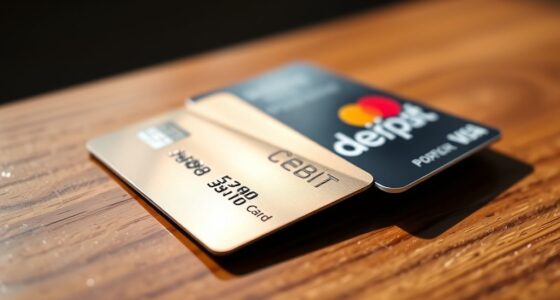Buy Now, Pay Later (BNPL) lets you split purchases into interest-free installments, making it easier to afford things quickly. It’s convenient, doesn’t hurt your credit score, and offers flexible repayment options, but beware—missed payments can lead to high fees and debt. Plus, protections are limited compared to credit cards. If you want to understand how to use BNPL wisely and avoid pitfalls, there’s more to explore.
Key Takeaways
- BNPL allows interest-free installment payments, making purchases more affordable and flexible for consumers.
- It boosts merchant sales but comes with higher fees and limited credit protections compared to traditional credit cards.
- Quick approval with soft credit checks simplifies access, but missed payments can lead to fees and credit harm.
- Longer-term BNPL plans may carry high interest rates, increasing overall costs if not managed carefully.
- Non-reporting to credit bureaus means timely payments don’t improve credit scores, posing a potential long-term disadvantage.

Have you heard of Buy Now Pay Later (BNPL) and wondered how it works? Basically, BNPL lets you split your purchases into smaller, manageable payments, often with the first due at checkout. Most services operate on a “pay-in-four” model, where you make four interest-free payments scheduled two weeks apart, settling your total purchase in about six weeks. When you apply, you usually just provide basic personal info and a payment method. Approval is quick, often without affecting your credit score, thanks to soft credit checks. You can access BNPL online, through mobile apps, and increasingly, in physical stores via virtual cards in mobile wallets. The provider pays the merchant upfront, then collects your installment payments. The merchant gets paid in full minus a processing fee, while the BNPL company takes on the risk and manages the repayment process.
BNPL’s popularity has skyrocketed. Over half of US consumers have used it, and in countries like India and the UK, it was the fastest-growing payment method in 2020. In Australia, nearly 10% of e-commerce transactions are paid via BNPL, and global projections suggest it will make up around 12% of all e-commerce spending on physical goods by 2025. Major providers include Affirm, Afterpay, Klarna, and Zip. Many merchants offering BNPL see a boost in sales—up to 14% higher on eligible purchases—because customers are more likely to buy when flexible payment options are available. However, these services come with higher merchant fees, typically around 4–6%, which is more than standard credit card processing costs.
BNPL’s rapid growth boosts sales by up to 14%, but merchants face higher fees of 4–6% compared to traditional credit card costs.
For consumers, BNPL offers appealing benefits. Short-term plans are often interest-free, allowing you to access what you want immediately without paying the full amount upfront. Approval is almost instant, and it’s usually easy to qualify without a hard credit check. You gain flexibility in repayment schedules, with some plans extending over longer periods—though those might include interest charges. If you make payments on time, BNPL usually doesn’t impact your credit score, since many providers don’t report to credit bureaus. Still, there are risks. Missing payments can result in late fees, sometimes up to 25% of your purchase, and could harm your credit if reported. Since BNPL is a form of debt, overusing it might overextend your finances, especially if you take on multiple payment plans. Longer-term BNPL options might carry high APRs—up to 36%, similar to credit cards—so it’s important to be cautious. Also, unlike credit cards, federal protections are limited, and dispute resolution processes vary among providers. Additionally, understanding the delicate balance between convenience and financial responsibility is crucial when considering BNPL to avoid potential pitfalls.
Frequently Asked Questions
How Does BNPL Impact My Credit Score?
BNPL can impact your credit score both positively and negatively. If you make payments on time, it may improve your credit history and show responsible borrowing. However, if you miss payments or accumulate too much debt, it can lower your score. Additionally, some lenders report BNPL activity to credit bureaus, so your payment behavior directly influences your credit profile. Always read the terms before using BNPL services.
Are There Hidden Fees With BNPL Plans?
Yes, some BNPL plans have hidden fees you might not notice initially. You could be charged late payment fees, interest, or service charges if you miss a payment or don’t pay on time. Always read the terms carefully before agreeing, as these fees can add up quickly. Staying aware of the fine print helps you avoid unexpected costs and keeps your finances in check.
Can BNPL Be Used Internationally?
Like a traveler crossing borders, you can use BNPL internationally, but it depends on the provider. Some companies operate globally, allowing you to split payments across different countries, while others are limited to specific regions. Always check if the service supports your country and the store’s location. Keep in mind currency conversion fees and local regulations, which can complicate international transactions. Planning ahead guarantees smooth sailing with BNPL abroad.
What Happens if I Miss a BNPL Payment?
If you miss a BNPL payment, expect late fees and potential interest charges. The retailer or BNPL provider may also report the missed payment to credit bureaus, hurting your credit score. Repeated missed payments could lead to account suspension or collection efforts. To avoid these issues, try to make payments on time or contact customer service if you’re facing difficulties to explore alternative arrangements.
Is BNPL Suitable for Large or Expensive Purchases?
If you’re thinking about using BNPL for huge or pricey buys, it’s like wielding a financial superhero—saving you instantly but risking a financial meltdown if misused. You can stretch payments over time, making big expenses feel like small ones. But beware: high costs or missed payments can turn this hero into a villain. Use BNPL wisely for expensive purchases, and always read the fine print to avoid surprises.
Conclusion
Just like a double-edged sword, Buy Now Pay Later offers convenience and flexibility, but it can also lead to debt if you’re not careful. You get to enjoy your purchases now and pay later, making life easier, but beware of falling into a trap of overspending. Weigh the pros and cons wisely, and use BNPL as a helpful tool rather than a shortcut to financial trouble. Stay informed and make smart choices—your wallet will thank you.









